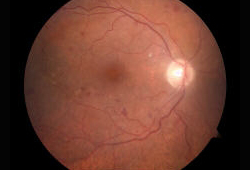Resumo
Definição
História e exame físico
Principais fatores diagnósticos
- blood pressure (BP) >180/120 mmHg
Outros fatores diagnósticos
- neurologic symptoms
- cardiac symptoms
- abnormal cardiopulmonary exam
- abnormal abdominal exam
- oliguria or polyuria
- abnormal fundoscopic exam
- abnormal neurologic exam
Fatores de risco
- inadequately treated hypertension
- chronic kidney disease
- renal artery stenosis
- renal transplant
- endocrine disorders with known hypertensive effects
- pregnancy
- older age
- black ethnicity
- male sex
- use of sympathomimetic drugs
- pharmacotherapy with known hypertensive effect
- obstructive sleep apnea
- vasculitis and connective tissue diseases
Investigações diagnósticas
Primeiras investigações a serem solicitadas
- blood chemistry
- CBC with smear
- urinalysis with microscopy
- ECG
- chest x-ray
Tests to avoid
- plasma catecholamines
Investigações a serem consideradas
- thyroid function tests
- liver function tests
- cardiac enzymes
- N-terminal pro-B-type natriuretic peptide (NT-proBNP)
- coagulation profile
- urine or serum pregnancy test
- urine toxicology screen
- computed tomography angiography (CTA) scan
- transthoracic echocardiography (TTE)
- renal ultrasound with Doppler
- head CT without contrast
- head MRI
- plasma renin activity and aldosterone level
- spot urine or plasma metanephrine
- 24-hour urine free cortisol
- sleep study
Algoritmo de tratamento
accelerated (malignant) hypertension or hypertensive encephalopathy or intracranial hemorrhage
acute ischemic stroke
myocardial ischemia/infarction
left ventricular failure and/or pulmonary edema
aortic dissection
acute kidney injury
hyperadrenergic state
severe hypertension in pregnancy (preeclampsia and eclampsia)
Colaboradores
Autores
M. Lee Sanders, PhD, MD
Clinical Associate Professor
Division of Nephrology
University of Iowa
Iowa City
IA
Declarações
MLS is an author of a reference cited in this topic.
Manish Suneja, MD, FASN, FACP
Clinical Professor
Division of Nephrology
University of Iowa
Iowa City
IA
Declarações
MS receives royalties from McGraw Hill as the editor of DeGowin’s Diagnostic Examination and is an author of a reference cited in this topic.
Agradecimentos
Dr M. Lee Sanders and Dr Manish Suneja would like to gratefully acknowledge Dr Hector Ventura and Dr Madhavi T. Reddy, previous contributors to this topic.
Declarações
HV declares that he has no competing interests. MTR is employed by Merck and owns stocks in Merck, and Johnson & Johnson.
Revisores
Aparna Sundaram, DO, MBA, MPH
Physician Consultant
Preventive Medicine
Private Practice
Atlanta
GA
Disclosures
AS declares that she has no competing interests.
Ethan Cumbler, MD
Assistant Professor
Department of Internal Medicine
University of Colorado Health Sciences Center
Denver
CO
Disclosures
EC declares that he has no competing interests.
Michael Schachter, MB, BSc, FRCP
Department of Clinical Pharmacology
St Mary’s Hospital
Imperial College
London
UK
Declarações
MS declares that he has no competing interests.
Créditos aos pareceristas
Os tópicos do BMJ Best Practice são constantemente atualizados, seguindo os desenvolvimentos das evidências e das diretrizes. Os pareceristas aqui listados revisaram o conteúdo pelo menos uma vez durante a história do tópico.
Declarações
As afiliações e declarações dos pareceristas referem--se ao momento da revisão.
Referências
Principais artigos
Whelton PK, Carey RM, Aronow WS, et al. 2017 ACC/AHA/AAPA/ABC/ACPM/AGS/APhA/ASH/ASPC/NMA/PCNA guideline for the prevention, detection, evaluation, and management of high blood pressure in adults: a report of the American College of Cardiology/American Heart Association Task Force on Clinical Practice Guidelines. J Am Coll Cardiol. 2018 May 15;71(19):e127-248.Texto completo Resumo
American College of Obstetricians and Gynecologists. Practice bulletin no. 222: gestational hypertension and preeclampsia. Jun 2020 [internet publication].Texto completo Resumo
Mancia G, Kreutz R, Brunström M, et al. 2023 ESH Guidelines for the management of arterial hypertension the Task Force for the management of arterial hypertension of the European Society of Hypertension: endorsed by the International Society of Hypertension (ISH) and the European Renal Association (ERA). J Hypertens. 2023;41(12):1874-2071.Texto completo Resumo
Artigos de referência
Uma lista completa das fontes referenciadas neste tópico está disponível para os usuários com acesso total ao BMJ Best Practice.

Diagnósticos diferenciais
- Hypertensive urgency
- Uncontrolled essential hypertension
Mais Diagnósticos diferenciaisDiretrizes
- The management of elevated blood pressure in the acute care setting
- Hypertension in adults: diagnosis and management
Mais DiretrizesFolhetos informativos para os pacientes
High blood pressure
High blood pressure: what is it?
Mais Folhetos informativos para os pacientesVideos
Venepuncture and phlebotomy: animated demonstration
How to perform an ECG: animated demonstration
Mais vídeosConectar-se ou assinar para acessar todo o BMJ Best Practice
O uso deste conteúdo está sujeito ao nosso aviso legal